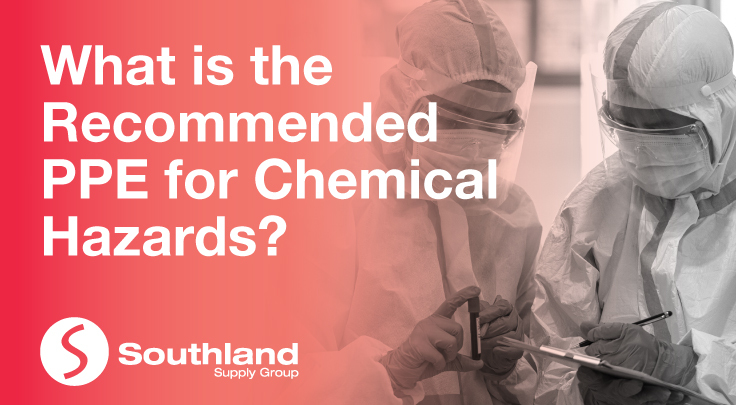
Working with chemicals can be dangerous, and workers need to wear the appropriate personal protective equipment (PPE). Anyone working with hazardous chemicals risk exposure to toxic splashes, temperature extremes, and harmful fumes. The dangers can be immediate or long-term, with symptoms of exposure or ingestion not always visible, but dangerous nonetheless. An important safeguard when working with hazardous chemicals is wearing the right Personal Protective Equipment (PPE).
Respirators
Appropriate respiratory protection should be used to protect against adverse health effects caused by inhaling gases or vapours from harmful chemicals. Full-face respirators cover the wearer’s entire face and form a seal so that only filtered or externally supplied breathing air enters the mask. Aside from full-face respirators, other respiratory protection can range from disposable masks to airline respirators and self-contained breathing apparatus (SCBA).
Eye and Face Protection
Employees working with chemicals should have access to eye and face protection such as safety glasses, safety goggles and face shields. Where there is a significant risk of a chemical splash, particularly when working with highly reactive chemicals, a full-face shield is recommended.
Hearing Protection
Many workers in different industries are exposed to noise in the workplace every day but when uncontrolled, this exposure may cause permanent hearing damage. Moreover, research shows that exposure to chemicals such as pesticides, solvents, and pharmaceuticals, can cause hearing loss or balance problems, regardless of noise exposure. Wearing hearing protection can protect the ears from noise and help to limit ototoxicant exposure.
Skin Cover
Handling hazardous chemicals at work can involve the risk of toxic or corrosive substances penetrating the skin, or toxic chemicals being slowly absorbed through the skin. Hence, lab coats or overalls are one of the most important PPE items to wear when working with chemicals. They should have elasticated cuffs and buttons or snaps for easy removal and no item of lab protective clothing should be removed from the workplace. In addition to this, it is also good to have chemical resistant gloves that will protect the arms, hands, and fingers from harmful substances and skin absorption.
Footwear
Chemical-resistant footwear must be worn anytime a worker is exposed to hazardous chemicals. Safety boots made for chemical resistance will use materials such as PVC to cover the entire foot and lower leg. These safety boots can also include other safety features, such as puncture-resistant soles and steel toes.
Southland Supply Group
Southland is at the forefront of providing superior personal protective and safety equipment to help keep workers safe. Whether you’re purchasing a piece of safety glasses or a pair of safety gloves, we provide an extensive range of safety equipment. Our team is also available to answer any of your safety-related questions on the phone or in a live online chat. You may visit our website at https://www.southland.com.au/
